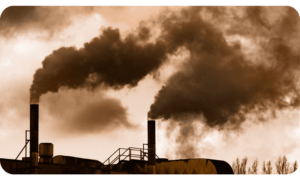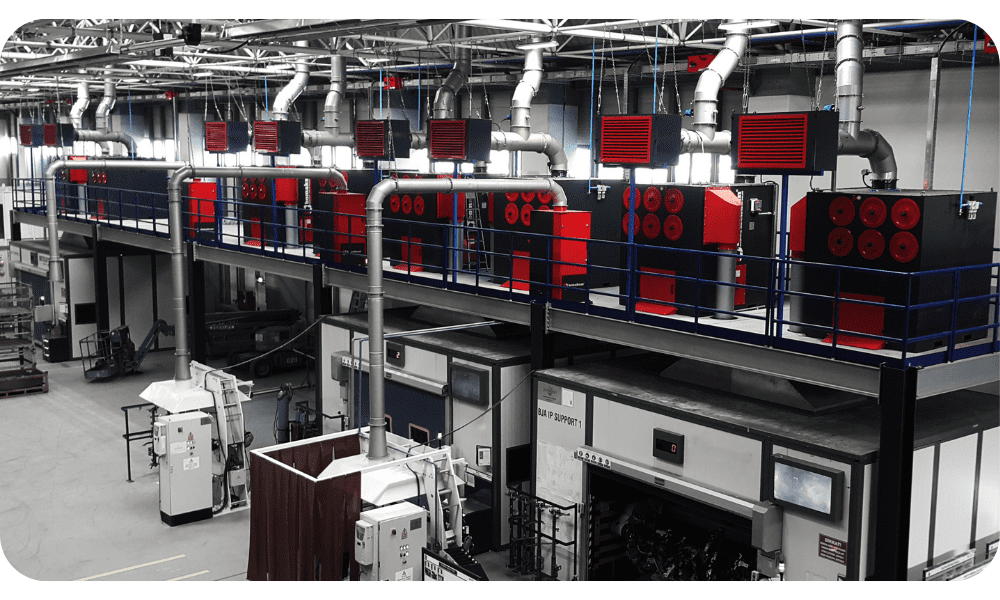
Dust Leakage Problem In Dust Collector
What is Dust Leak? Dust leakage problem, which is one of the most common problems in dust collection and filtration systems, is the leakage of

Project designers and process owners often focus on filtering devices when designing or purchasing a dust collection system. Yet another area they focus on is the proper disposal of indoor polluted air from the environment. These two issues are very important for dust collection systems, but another important issue is what to do with the cleaned air, which directly affects operating costs.
Old dust collection systems directly discharge the air from the filter unit to the atmosphere (external environment). The main reason for this approach is that traditional filtration technologies require expensive investments to convert the released air into breathable indoor air. These expensive investments can meet the financial benefits that can be obtained from energy savings in very long terms. Today, although there are still applications where this approach is correct, heat recovery is becoming a smarter choice in many applications thanks to new filtration technologies. Considering the positive effects of energy-saving on our planet earth, it has become a human duty to save energy as much as possible.
1. How to Save Energy?
Dust collection and fume extraction systems extract the dirty air at a certain airflow rate in order to effectively eliminate the pollution formed in the factory. Dust collection systems transport the factory air, which is heated and conditioned by spending serious energy, to the filter unit along with dust and fume during this suction. When this filtered air is discharged directly to the atmosphere, the same amount of air must be reheated and the working comfort of the factory must be maintained. It is possible to save energy used to heat this air with heat recovery systems.
If the filters used in dust collection and fume extraction systems are designed correctly, it is possible to discharge the filtered air directly into the indoor factory environment. At the point where filtration technology comes in, this is an accessible investment option. PolyMIGHT PTFE 65 filter media is a high-tech filter media with H13 class filtration efficiency. In addition, the costs of high-efficiency air filters, called HEPA filters, are quite accessible in today’s conditions.
Some processes and some local regulations demand the continuous monitoring and control of this air released into the indoor environment after it has been filtered. In this case, an air quality monitoring sensor to be integrated into the return air and an automation system that will work with this sensor will be an effective solution. In addition, particle level monitoring sensors to be placed in the interior of your factory at regular intervals will help you provide a safer working environment for your employees.
The point that should be taken into consideration by profit-oriented businesses in this choice is of course the rate of return of the investment. Calculating this amount requires several complicated processes. The following values should be determined for these operations;
– How many m³ of heated air per hour will be taken from the environment
– The amount of kcal you spend for heating 1 m³ of air in your facility (This value may vary depending on the climatic conditions of the factory. You can get support in this regard from the company that makes your air conditioning projects.)
– 1 kcal / h = 0.001163 kW (0.001163 kWh for 1 hour)
– the cost of 1 kWh of energy
– How many hours of work per month/year.
After determining these values, the calculation is actually quite simple. For example;
– Dust Collection System Capacity: 10.000 m³ / h
– To heat 1 m³ of air by 1 ° C, we need 0.173 kcal of energy. In this example, let’s assume that we take 10 ° C air from outside and raise this air to 18 ° C. In this case, 1,384 kcal / m³ of energy is needed. In a dust collection system with a capacity of 10,000 m³ / h, this means 13,840 kcal / h. (Of course, there will be periods throughout the year when the temperature differences are higher and lower, In this example, an average value is taken.)
– 13.840 kcal/h = 16.1 kW (16,1 kWh per 1 hour)
– 1 kWh = 0,1 €
– 8 hours a day = 176 hours a month = 2.112 hours of work per year;
– 16,1(kWh) * 0,1 (€) * 2112 (h) = Savings of 3.400 € / year can be achieved.
As you will see in our example above, when an enterprise returns the air exiting the filter unit to its working environment, it saves a minimum of around € 3,000 per year. This saving will be valid every year the dust collector is in operation. In addition to this savings, in some cases, if the filter unit can be placed in an indoor environment close to the pollution source, some additional gains can be obtained both because the total pressure loss to be overcome by the suction fan will decrease and the piping and stack costs will be reduced.
In addition to all these, some local governments may give incentives for energy-saving investments. You can also consult with your local governments and benefit from additional incentives and supports in this regard.
2. You need to be careful in Some Applications and Dust Types!
Dust arises from some applications can be flammable or explosive. In this case, additional measures must be taken before returning the filtered clean air into the facility. For example, a bypass duct and damper may be required to prevent smoke from evacuating indoors in the event of a fire. Or, in explosive dusts, it may be necessary to use “return valves” to prevent the effect of the explosion from spreading to the interior. You can consult Bomaksan Clean Air Experts on these issues with peace of mind.
Some businesses may not want to continuously discharge the filtered air indoors. (For example in summer) In this case, you can use a bypass line and damper to be placed in the return air. Thus, instead of returning the hot air to the indoor environment, you can discharge it to the atmosphere. When the air sucked from the indoor environment is discharged to the atmosphere or to another area, additional air reinforcement is required in the suction area. It is important to consider this when determining the ventilation project. Otherwise, the suctioned environment will turn into a negative pressure room and uncontrolled airflow will occur in the room
3. Legal Requirements
If the dust released in your process is classified as dangerous by local regulations, you may need to constantly monitor the air you discharge both indoors and into the atmosphere. In order to detect a leak in the filter unit, a particle sensor may be required in the stack or return air ducts where fresh air is discharged.
Case Studies

What is Dust Leak? Dust leakage problem, which is one of the most common problems in dust collection and filtration systems, is the leakage of

Extraction arms are the name given to suction apparatus that can move and allow operators to work flexibly. It usually consists of a suction hood,

Many industrial companies are seeking information on how to evaluate the performance of working dust collection systems. Many researches and articles which process owner refers
© 2017 - 2022 Bomaksan Industrial Air Filtration Systems. All Rights Reserved.